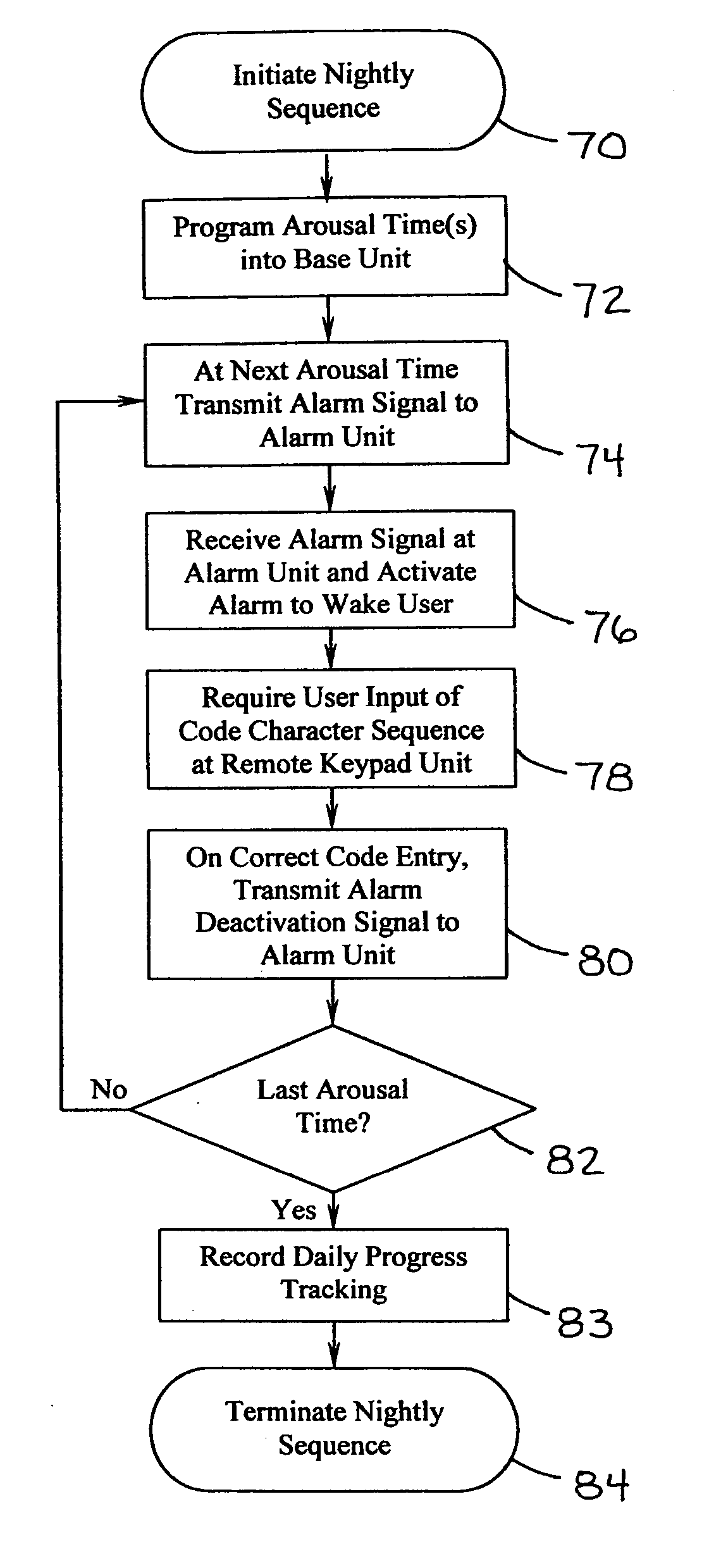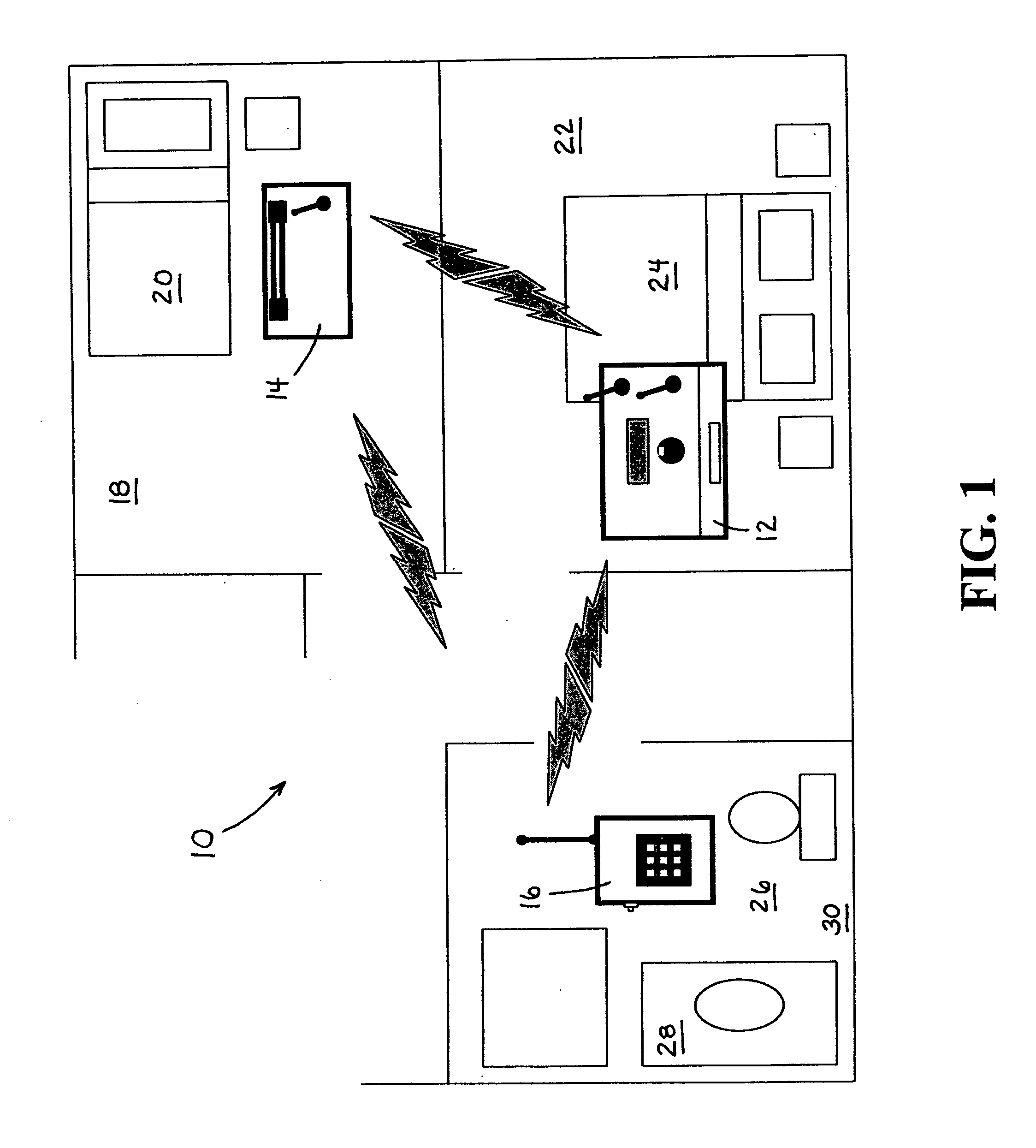System and method for elimination of bedwetting behavior
a bedwetting behavior and system technology, applied in the field of bedwetting detection and prevention, can solve the problems of inability to maintain the association, efforts that have generally failed to achieve the goal of training users to stop bedwetting, etc., and achieve the effect of bypassing the level of arousal, simplifying the training and reprogramming of sleep patterns and behavior, and avoiding the overall simplicity of the system
- Summary
- Abstract
- Description
- Claims
- Application Information
AI Technical Summary
Benefits of technology
Problems solved by technology
Method used
Image
Examples
Embodiment Construction
[0027] Reference is made first to FIG. 1 for a general description of the structural components of the system for elimination of bedwetting behavior of the present invention. These components include the base unit, alarm unit, and keypad unit. The base unit hardware 12 for the bedwetting elimination system 10 is positioned in the parent or caregiver's room 22 next to the bed 24. The alarm unit 14 is located in the user's room 18, next to the user's bed 20. The keypad unit 16 is positioned in the bathroom 26 at a convenient mounting location 28. The code is also written down at a readily accessible code display reminder location 30.
[0028] Base unit 12, alarm unit 14, and keypad unit 16, each comprise low power radio frequency (RF) transceivers. Short distance, wireless signal communications occur between the base unit 12 and the alarm unit 14 as directed by the programmed timing in the base unit 12. Keypad unit 16 is capable of transmitting an alarm de-activation signal back to both...
PUM
 Login to View More
Login to View More Abstract
Description
Claims
Application Information
 Login to View More
Login to View More - R&D
- Intellectual Property
- Life Sciences
- Materials
- Tech Scout
- Unparalleled Data Quality
- Higher Quality Content
- 60% Fewer Hallucinations
Browse by: Latest US Patents, China's latest patents, Technical Efficacy Thesaurus, Application Domain, Technology Topic, Popular Technical Reports.
© 2025 PatSnap. All rights reserved.Legal|Privacy policy|Modern Slavery Act Transparency Statement|Sitemap|About US| Contact US: help@patsnap.com



